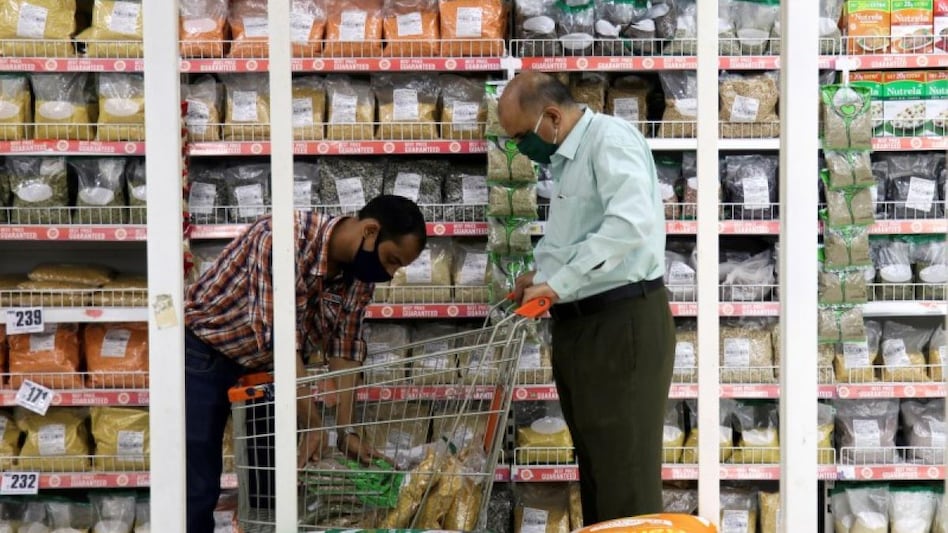
 Inflation to remain in double digits for the next few months, warn economists (Photo: Reuters)
Inflation to remain in double digits for the next few months, warn economists (Photo: Reuters) Inflation to remain in double digits for the next few months, warn economists (Photo: Reuters)
Inflation to remain in double digits for the next few months, warn economists (Photo: Reuters)India’s wholesale inflation touched a series high in November, on the back of a surge in vegetable prices and high fuel prices. The rate of price rise is expected to remain in double digits for the next few months on account of rupee depreciation, elevated international crude oil prices and Omicron fears, which are leading to global supply chain disruption, economists cautioned.
Wholesale price index (WPI)-based inflation climbed to 14.23 per cent in November as against 12.54 per cent in the previous month, data released by the Ministry of Commerce and Industry showed on Tuesday. It is the eighth straight month of double digit WPI inflation.
The divergence between WPI and its retail counterpart consumer price index (CPI)-based inflation widened further to nearly 10 percentage points in November on the back of large weights of fuel and manufactured items in the WPI basket. CPI inflation touched a 3-month high of 4.91 per cent in the same month, according to data released on Monday.

“Although the prices of various food items have displayed a seasonal downtrend and those of several commodities have corrected to an extent following the reality check provided by the Omicron variant, the rupee has depreciated in recent sessions, which would curtail the extent of moderation in the WPI inflation in December,” said Aditi Nayar, chief economist, ICRA Ratings.
"We now forecast the WPI inflation to average 11.5-12.0 per cent in FY2022, with the headline and core inflation expected to continue to print in double-digits over the next three months and one month, respectively,” added Nayar.
Primary articles inflation doubled to 10.34 per cent in November from 5.2 per cent in October. Under that head, food articles saw inflation jump to 4.88 per cent during the month, compared with a 1.69 per cent deflation in October.
“A falling base is likely to push up the inflation rate for primary food articles further in the current month, in spite of an anticipated sequential moderation in prices of various food items,” said Nayar of ICRA.
While fruit and vegetable prices generally soften in winter months, inflation in these categories saw a sharp jump in inflation. While vegetable inflation touched 3.91 per cent in November compared to an 18.49 per cent deflation in the previous month, inflation in fruits spiked to 15.5 per cent from 8.22 per cent in October. The WPI food index, which has a nearly 25 per cent weight in the overall index, saw inflation double to 6.7 per cent, from 3.06 per cent in the previous month.
Also, core inflation climbed to a fresh high of 12.3 per cent in November and remained over 11 per cent for the fifth straight month.
“Sticky core inflation indicates that manufacturers are increasingly passing on the higher input costs to their output prices despite uneven recovery in demand,” said Sunil Kumar Sinha, Principal Economist, India Ratings and Research.
Fuel and power inflation remained elevated at 39.81 per cent in November, compared to 37.18 per cent in the previous month. Crude petroleum inflation rose further to 91.74 per cent in November from 80.57 per cent a month ago. Inflation for diesel shot up to 86.07 per cent from 71.68 per cent and that for petrol to 85.38 per cent from 64.72 per cent.
“Since fuel is a major input into transportation cost, higher fuel prices push up the distribution cost further. Consequently, inflation in seven groups namely, textiles, paper & chemicals, rubber & plastics, basic metals, fabricated metals and furniture has been in double-digits now for six successive months, with textiles, paper and chemicals touching a new record high in November,” added Sinha of India Ratings.
Although the Brent crude has softened from the recent high of $84/barrel it has started rising again with Omicron fears receding and touched $74.4 per barrel on Monday.
Besides, weaker rupee will only make imports more expensive, further fueling inflationary pressures in the domestic market. Rupee depreciated to nearly 76 against the US dollar on Tuesday.
The Indian currency has been depreciating on expectations of US Fed Reserve hiking interest rates and quicker pace of bond tapering with inflation in the world’s largest economy at a near four-decade high. Higher US interest rates may lead to capital outflows from risker emerging market currencies.
Manufactured products, which accounts for 64.23 per cent of the index, saw inflation ease marginally to 11.92 per cent from 12.04 per cent in October.
“The fuel price inflation is likely to cool off due to a cut in excise duty. The rise in WPI is likely to have a further effect on industrials, but no impact on RBI policy as it has stated that economic recovery is the priority right now,” argued D.R.E Reddy, CEO and Managing Partner, CRCL LLP, a contractual food services company.
Also Read: WPI inflation surges to 14.23% in November as crude, metal prices harden
Also Read: WPI inflation hits record high of 14.23% in November